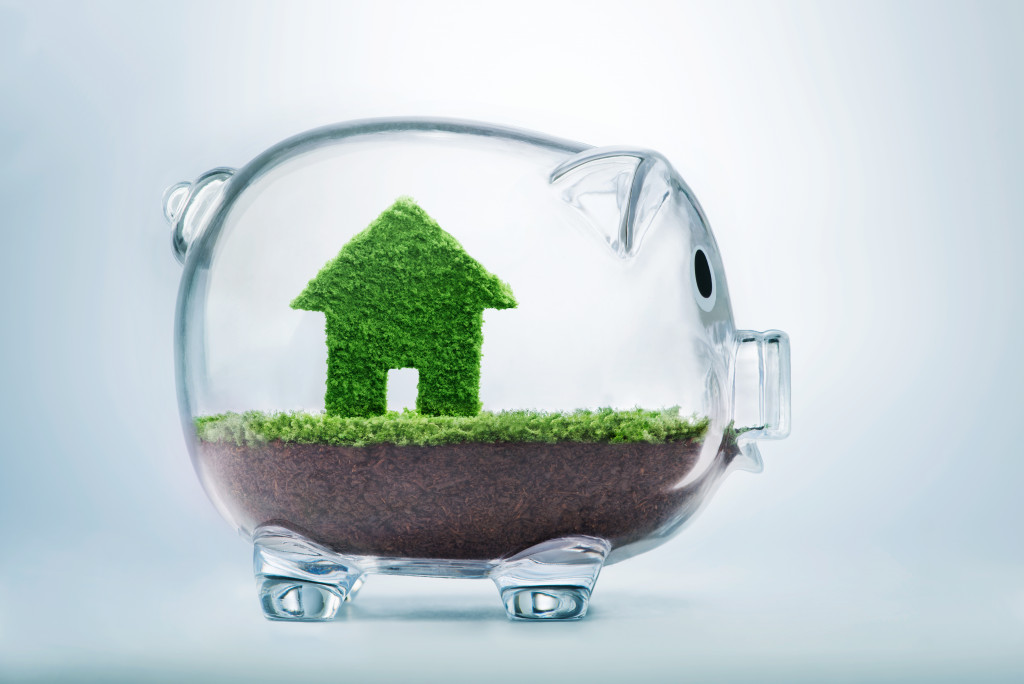- Energy efficiency upgrades such as solar panels and EnergyStar appliances can reduce energy costs and attract environmentally conscious tenants.
- Insulation, low-VOC paint, carpeting, and house plants can improve indoor air quality and attract health-conscious tenants.
- Water conservation through low-flow showerheads, rainwater collection systems, and greywater recycling systems are great ways to reduce water consumption.
- Sustainable landscaping practices, such as using native plants and rain-scaping, can maximize runoff that is collected and reused.
As a landlord or property investor, you know the importance of maintaining your property to attract and retain tenants, but have you considered how sustainable building practices can benefit you in the long run? Sustainable building practices not only reduce the environmental impact of your property but can also increase its value and attract environmentally-conscious tenants. Here are some upgrades to consider for your rental property to ensure long-term investment success.
Energy Efficiency
A study conducted by the Department of Energy showed that energy-efficient buildings have a higher resale value and attract tenants who are willing to pay a premium for sustainable features. For this reason, it’s important to invest in energy-efficient upgrades such as:
Solar Panel Systems
Solar panels are an excellent way to upgrade your rental property. Solar panels can offset energy costs, making them a cost-effective solution for landlords. Additionally, solar panel systems produce clean, emissions-free energy, providing tenants with more eco-friendly options for their energy needs.
Energy-efficient Appliances
Replacing old appliances with energy-efficient models is a great way to reduce energy costs and encourage tenants to live sustainably. Energy-Star-certified appliances use up to 30% less energy than traditional models, translating into savings on electricity bills. Additionally, many utility companies offer incentives for installing these types of appliances in rental units.
Home Insulation
Home insulation is an important aspect of energy efficiency, as it can help reduce energy costs by reducing the amount of energy lost through walls and windows. A reliable insulation company can assess your property and recommend different types of insulation to ensure that your rental units are properly insulated.

Indoor Air Quality
Investing in indoor air quality can improve tenant health and reduce maintenance costs. These practices can also attract tenants who prioritize health and wellness. Here are some ideas:
Invest in a Good Ventilation System
Installing a good ventilation system is a great way to ensure the air quality inside your rental property remains healthy. It can reduce the number of indoor pollutants and dust, improve humidity levels, and keep temperatures comfortable. Additionally, it can also save energy costs by ensuring that heated or cooled air is not lost through inefficient systems.
Use Low-VOC Paint & Carpeting
Low Volatile Organic Compound (VOC) paint and carpeting can reduce indoor air pollutants and improve tenant health. These products are designed to release fewer fumes into the air, making them safer and more eco-friendly than traditional products.
Consider House Plants
House plants are an easy and affordable way to improve air quality. They filter out toxins and pollutants from the air, making them a great option for landlords looking to create healthier living spaces for their tenants.

Water Conservation
Reducing water consumption in your rental property can save you money on your water bill and attract tenants who are environmentally conscious. It’s important to invest in water-saving devices such as:
Low-flow Showerheads & Faucets
Installing low-flow showerheads and faucets is an effective way to reduce water consumption in rental properties. They provide the same pressure as traditional fixtures but with less water, as low-flow faucets are designed to reduce flow rates by up to 60%. Additionally, these fixtures are available in a variety of styles, allowing you to customize your rental property.
Rainwater Collection Systems
Rainwater collection systems are an excellent way to capture and reuse rainwater for irrigation, cleaning, or other uses. This not only reduces water consumption but also saves money on your water bill. Additionally, rain-scaping practices such as using native plants can be used to maximize the amount of runoff that is collected and reused.
Greywater Recycling Systems
Greywater recycling systems are an effective way to reduce waste and reuse water in your rental property. These systems capture used water from sinks, showers, and laundry machines and filter them for reuse in toilets or irrigation. This reduces the amount of clean water needed for everyday use and can save money on utility bills.
Implementing sustainable building practices in your rental property can benefit you in many ways, from attracting environmentally-conscious tenants to reducing maintenance costs and enhancing your property’s value. Incorporating energy efficiency, water conservation, indoor air quality, sustainable landscaping, and material selection will benefit not only the environment but also your bottom line. By investing in sustainable building practices, you are ensuring long-term investment success and contributing to a healthier planet.



